Search the Special Collections and Archives Portal
Search Results

Slide of protesters at a demonstration held on Mother's Day near the Nevada Test Site, May 10, 1987
Date
1987-05-10
Archival Collection
Description
Color image of a crowd of protesters, some with signs or umbrellas, at a demonstration held by American Peace Test, a group opposed to nuclear testing.
Image
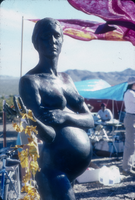
Slide of a statue of a pregnant woman at a demonstration held on Mother's Day near the Nevada Test Site, May 10, 1987
Date
1987-05-10
Archival Collection
Description
Color image of a statue of a nude pregnant woman at a demonstration held by American Peace Test, a group opposed to nuclear testing.
Image
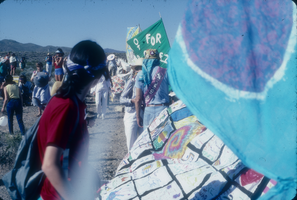
Slide of protesters carrying signs at a demonstration held on Mother's Day near the Nevada Test Site, May 10, 1987
Date
1987-05-10
Archival Collection
Description
Color image of a crowd of protesters, including mothers, carrying signs at a demonstration held by American Peace Test, a group opposed to nuclear testing.
Image
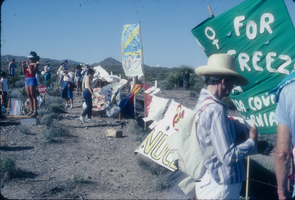
Slide of protesters carrying signs at a demonstration held on Mother's Day near the Nevada Test Site, May 10, 1987
Date
1987-05-10
Archival Collection
Description
Color image of a crowd of protesters carrying signs at a demonstration held by American Peace Test, a group opposed to nuclear testing.
Image
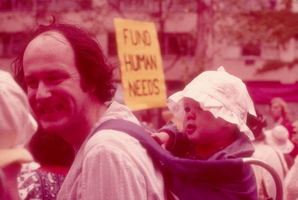
Slide of a protester and baby at a demonstration held on Mother's Day near the Nevada Test Site, May 10, 1987
Date
1987-05-10
Archival Collection
Description
Color image of a man carrying a baby on his back at a demonstration held by American Peace Test, a group opposing nuclear testing. Near them is a sign reading, "Fund Human Needs."
Image
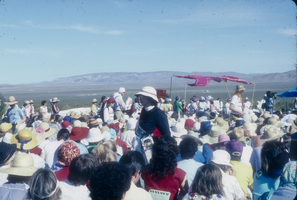
Slide of protesters at a demonstration held on Mother's Day near the Nevada Test Site, May 10, 1987
Date
1987-05-10
Archival Collection
Description
Color image of a crowd of protesters at a demonstration held by American Peace Test, a group opposed to nuclear testing.
Image
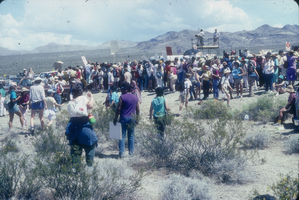
Slide of protesters at a demonstration held on Mother's Day near the Nevada Test Site, May 10, 1987
Date
1987-05-10
Archival Collection
Description
Color image of a crowd of protesters at a demonstration held by American Peace Test, a group opposed to nuclear testing.
Image

Slide of a family of protesters at a demonstration held on Mother's Day near the Nevada Test Site, May 10, 1987
Date
1987-05-10
Archival Collection
Description
Color image of a family of protesters at a demonstration held by American Peace Test, a group opposed to nuclear testing. They have the following signs on their backs: Husband for Peace; Mother for Peace; Daughter for Peace; and Son for Peace.
Image

Slide of a protester at a demonstration held on Mother's Day near the Nevada Test Site, May 10, 1987
Date
1987-05-10
Archival Collection
Description
Color image of a protester sitting next to a truck at a demonstration held by American Peace Test, a group opposed to nuclear testing.
Image
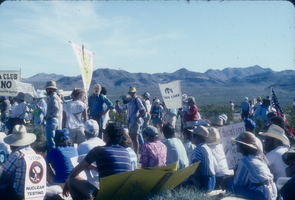
Slide of protesters at a demonstration held on Mother's Day near the Nevada Test Site, May 10, 1987
Date
1987-05-10
Archival Collection
Description
Color image of a crowd of protesters with signs at a demonstration held by American Peace Test, a group opposed to nuclear testing.
Image
Pagination
Refine my results
Content Type
Creator or Contributor
Subject
Archival Collection
Digital Project
Resource Type
Year
Material Type
Place
Language
Records Classification
